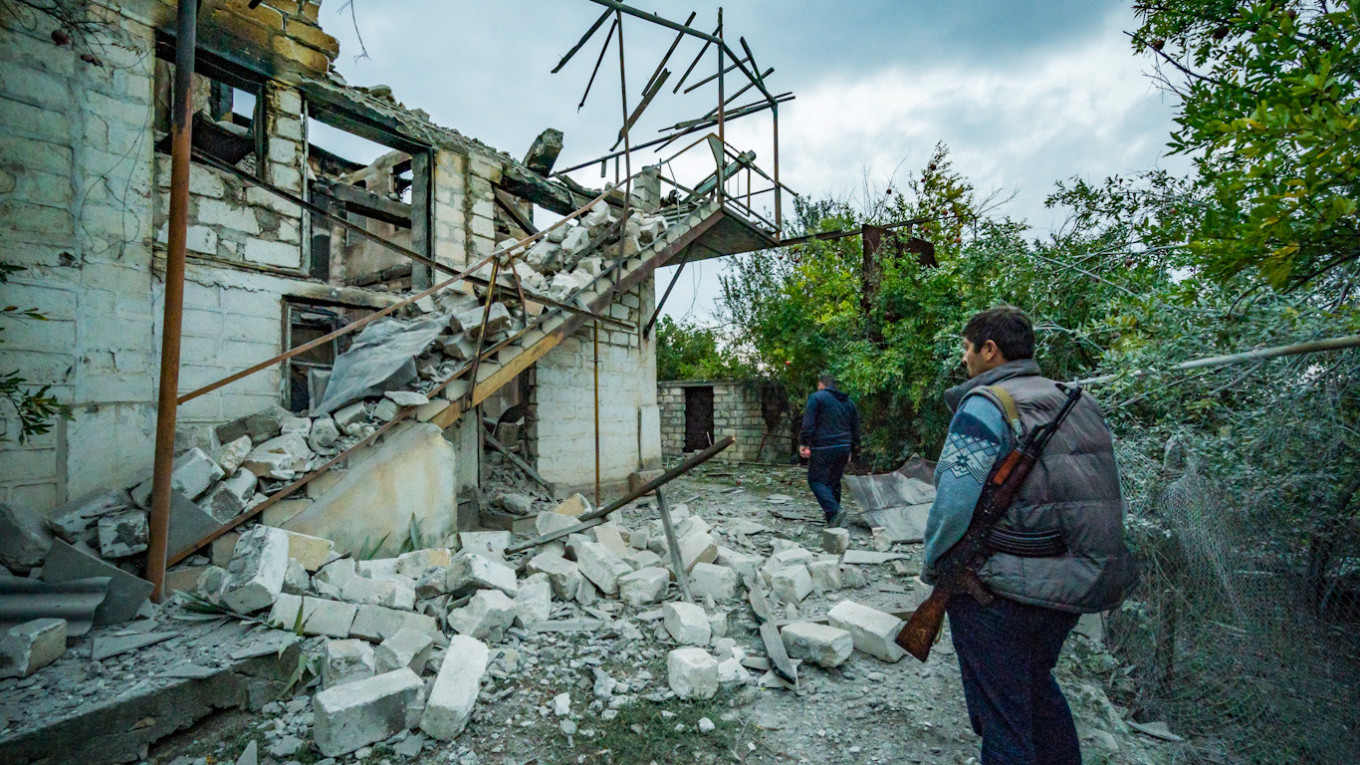
Azerbaijan accused Armenia of a missile attack that killed four civilians Tuesday, as Washington urged the two sides to abide by a ceasefire aimed at halting weeks of fighting over Nagorno-Karabakh.
With clashes over the disputed Caucasus region entering a second month, international mediators are pushing to bring a stop to frontline clashes and shelling of civilian areas that have left hundreds dead.
A U.S.-brokered ceasefire agreed at the weekend — the third attempt at a truce — unraveled within minutes on Monday with the two countries trading accusations of new attacks.
Azerbaijani presidential aide Hikmet Hajiyev said Tuesday that Armenian forces had fired missiles on a village in the country’s Barda region near the frontline, killing four civilians, including a two-year-old girl, and wounding 13 others.
He claimed cluster bombs had been used and accused Armenia of an “indiscriminate and targeted attack against civilians.”
“In violation of humanitarian ceasefire and in order to compensate their sustained military losses, Armenia resorts to war crimes of killing civilians,” Hajiyev said in English on Twitter.
Armenian defense ministry spokeswoman Shushan Stepanyan denied the claim as “an absolute lie and a dirty provocation.”
Karabakh’s rights ombudsman Artak Beglaryan accused Azerbaijani forces of “deliberately targeting civilians” by firing rockets carrying cluster munitions Tuesday into a village in the region’s Martuni district, wounding three women.
‘No military solution’
Azerbaijan and Armenia have been locked in a bitter conflict over Karabakh since Armenian separatists backed by Yerevan seized control of the mountainous province in a 1990s war that left 30,000 people dead.
Karabakh’s self-declared independence has not been recognized internationally, even by Armenia, and it remains a part of Azerbaijan under international law.
The current fighting broke out on Sept. 27. Armenia and Azerbaijan accuse each other of having targeted civilians and of breaking the previous truces.
In separate phone calls with Armenian Prime Minister Nikol Pashinyan and Azerbaijani President Ilham Aliyev, U.S. Secretary of State Mike Pompeo urged them to stand by the ceasefire agreed on Sunday.
Pompeo “pressed the leaders to abide by their commitments to cease hostilities and pursue a diplomatic solution to the Nagorno-Karabakh conflict,” the State Department said in a statement.
Pompeo told the two leaders that “there is no military solution to this conflict,” the State Department said.
Russia, France and the United States are leaders of the “Minsk Group” which has failed since the 1990s to bring about a negotiated settlement to the conflict.
Fresh frontline fighting
This year’s fighting is the heaviest since a 1994 ceasefire, raising fears that both Russia, which has a military alliance with Armenia, and Azerbaijan’s ally Turkey could be further drawn into the conflict.
Azerbaijan has claimed to be making significant gains since the fighting began by retaking areas it lost in the 1990s war, in particular in a buffer zone outside Karabakh seized by the Armenians.
Armenia has admitted to suffering losses and called on volunteers to join the fighting at the front.
The two countries’ defense ministries said fighting was continuing along the frontline on Tuesday.
More than 1,000 people have been reported dead in the fighting, mainly Armenian separatist fighters but also dozens of civilians on both sides.
Azerbaijan has not released any figures on its military casualties and the death toll is believed to be substantially higher, with Russian President Vladimir Putin saying last week that close to 5,000 people had been killed.
